Almost every gardener loves the scent of roses, but for deer a rosebush smells like dinner. You could go out and plant some of the coarse evergreen shrubbery that deer are known to avoid, but you may find yourself just as disinterested in the garden as the deer if there are no flowers to enjoy.
Fortunately, there are a small number of flowering shrubs that deer typically leave alone. Here is a collection of the most handsome and fragrant of them, with at least a few choices for gardeners in every corner of the country.
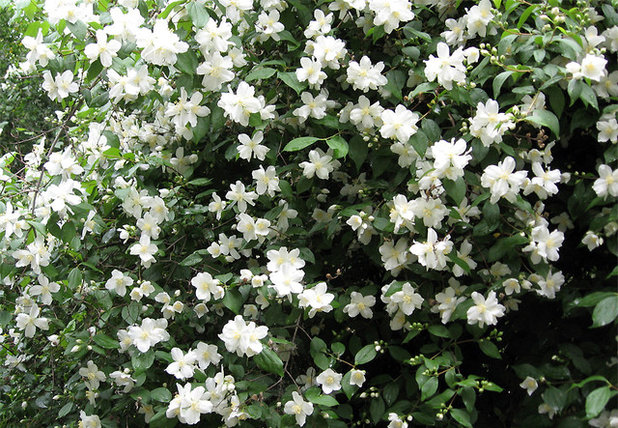 1. Mock Orange
1. Mock Orange (
Philadelphus spp.)
Mock orange was named for the heavenly fragrance of its flowers, which is reminiscent of orange blossoms. Its flowers are much larger than citrus blossoms, but they do have the same pure white color. There are varieties of mock orange native to both sides of the continent, though
P. coronarious, a European variety, is the one most often found in nurseries.
Where it will grow: Hardy to minus 40 degrees Fahrenheit, or minus 40 degrees Celsius (USDA zones 3 to 9; find your zone)
Light requirement: Full sun or dappled shade
Water requirement: Moderate
Mature size: 8 to 12 feet tall
Photo by A. Barra
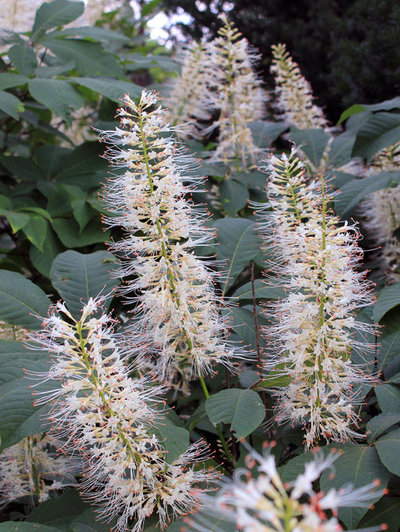
Enroot Landscape Planning and Design
2. Bottlebrush Buckeye (
Aesculus parviflora)
Native to the forests of the southeastern U.S., bottlebrush buckeye thrives in dappled shade and tolerates hot, humid conditions. Its white flower spikes grow up to 12 inches long and are held above the leaves like candelabras. The flowers give way to an attractive but inedible nut that resembles a chestnut (the seeds and foliage are poisonous to humans if eaten).
Where it will grow: Hardy to minus 20 degrees Fahrenheit, or minus 29 degrees Celsius (zones 5 to 9)
Light requirement: Dappled shade to full sun
Water requirement: Moderate
Mature size: 12 to 15 feet tall
See how to grow bottlebrush buckeye
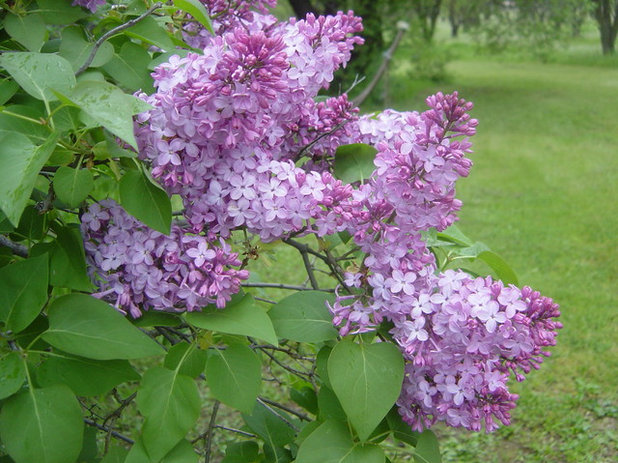
Pamela Bateman Garden Design
3. Lilac(
Syringa vulgaris)
Lilac flowers exude a subtle but exquisite aroma and are known for their long spring bloom period. Lilac needs cold winters to bloom well, not the best choice for the South, but it is probably second only to roses as a favorite fragrant shrub in Northern climates. Use it as a hedge or train it into a tall fountain-shaped shrub as a focal point amid a bed of spring bulbs. (Beware that lilac is mildly invasive in some areas, mainly in Canada.)
Where it will grow: Hardy to minus 40 degrees Fahrenheit, or minus 40 degrees Celsius (zones 3 to 7)
Light requirement: Full sun
Water requirement: Moderate
Mature size: 8 to 12 feet tall
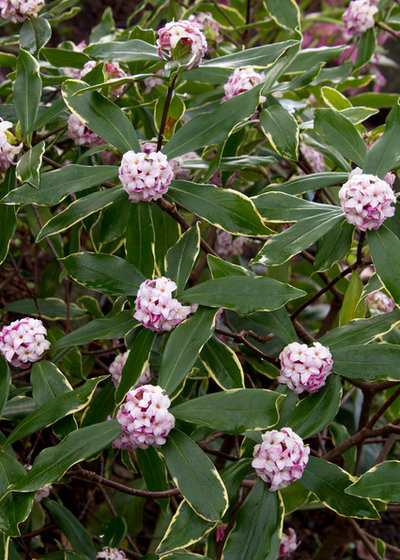
Monrovia
4. Winter Daphne(
Daphne odora)
Another shrub with an intoxicating fragrance, winter daphne is one of the earliest-blooming shrubs there is — in mild climates the blossoms open in early February and last for weeks. It’s a small evergreen shrub with a striking branch pattern, and the popular variety ‘Aureomarginata’, shown here, has lustrous variegated leaves.
Daphne is not very cold-hardy but is small enough to grow in a container and bring indoors for the winter. Even where it can be grown outdoors all year, some gardeners choose to keep it in a pot to provide the perfect drainage conditions it requires.
Where it will grow: Hardy to 0 degrees Fahrenheit, or minus 18 degrees Celsius (zones 7 to 9)
Light requirement: Partial shade
Water requirement: Moderate
Mature size: 3 to 4 feet tall
See how to grow winter daphne
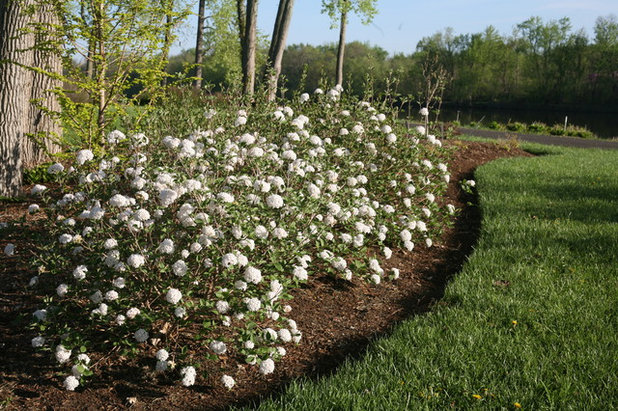
Proven Winners
5. Viburnum(
Viburnum spp.)
There are several popular landscaping plants in the
Viburnum genus, all of which have large flower clusters in summer. Snowball viburnum (
V. macrocephalum) has enormous pompom flowers that are reminiscent of hydrangeas. The native highbush cranberry viburnum
(
V. trilobum) has flat-topped flower clusters followed by red berries that are a feast for birds in fall — and are edible by humans as well, though they are extremely sour. On the whole, viburnums aren’t known for fragrance, but at least one species — Burkwood’s viburnum (
V. x burkwoodii) — has a gardenia-like fragrance.
Where it will grow: Hardy to minus 50 degrees Fahrenheit, or minus 46 degrees Celsius (zones 2 to 9), depending on the species
Light requirement: Partial to full sun
Water requirement: Moderate
Mature size: 8 to 12 feet tall
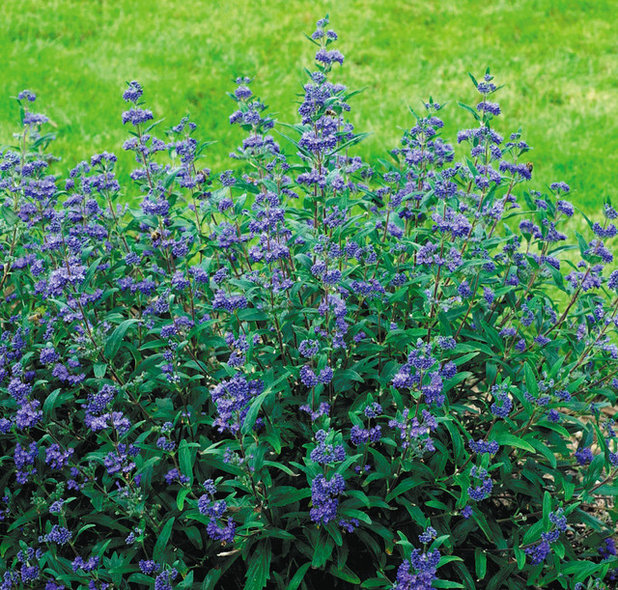
Proven Winners
6. Bluebeard(
Caryopteris spp.)
This butterfly favorite grows as a small woody shrub that is often mistaken for some of the blue-flowering
Salvia species. Bluebeard has intensely colored blue or purple flowers, depending on the variety, that rise in whorled spikes above its fragrant foliage. It’s a good choice for a low hedge around beds of perennials or annuals.
Where it will grow: Hardy to minus 20 degrees Fahrenheit, or minus 29 degrees Celsius (zones 5 to 9)
Light requirement: Full sun
Water requirement: Minimal water once established
Mature size: 3 to 4 feet tall
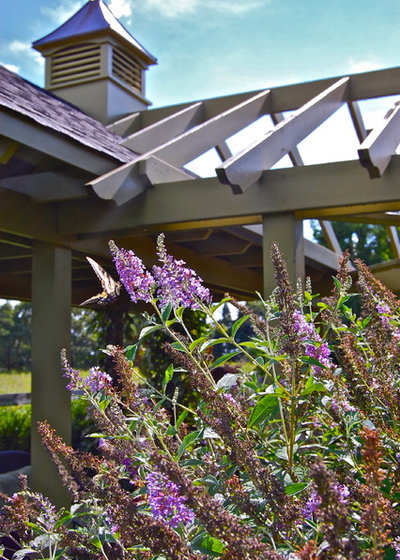
Liquidscapes
7. Butterfly Bush(
Buddleia davidii)
As the name implies, this is one of the best shrubs for attracting butterflies to the garden. It’s an upright grower with an attractive vase-shaped form that makes it useful as a centerpiece in a bed of annuals or perennial flowers. Butterfly bush resembles lilac (minus the fragrance) but thrives in hot, humid places where lilac often fails. It is a summer bloomer.
Note that butterfly bush is invasive in some areas; there are numerous noninvasive modern cultivars, including ‘Asian Moon’ and ‘Miss Ruby’.
Where it will grow: Hardy to minus 20 degrees Fahrenheit, or minus 29 degrees Celsius (zones 5 to 10)
Light requirement: Full sun
Water requirement: Minimal water once established
Mature size: 6 to 8 feet tall
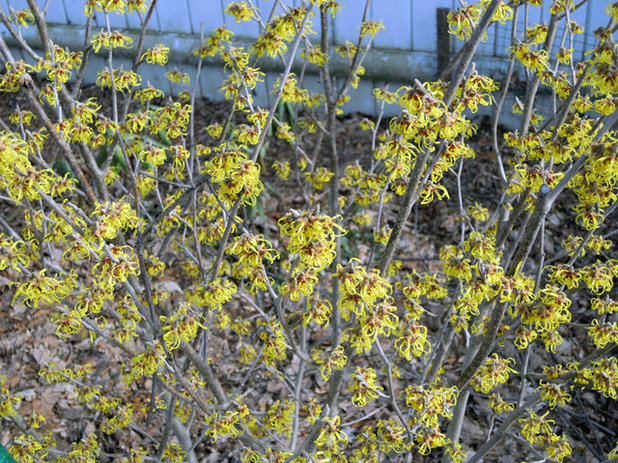 8. Witch Hazel
8. Witch Hazel(
Hamamelis spp.)
A large shrub with fringy flower petals and a delightful scent, witch hazel is known for the profuse blooms on its bare branches in late winter or early spring. There are several species native to eastern North America that are available at nurseries. The shrubs are also known for their yellow-orange foliage in fall.
Where it will grow: Hardy to minus 30 degrees Fahrenheit, or minus 34 degrees Celsius (zones 4 to 8)
Light requirement: Partial to full sun
Water requirement: Moderate
Mature size: 10 to 15 feet tall
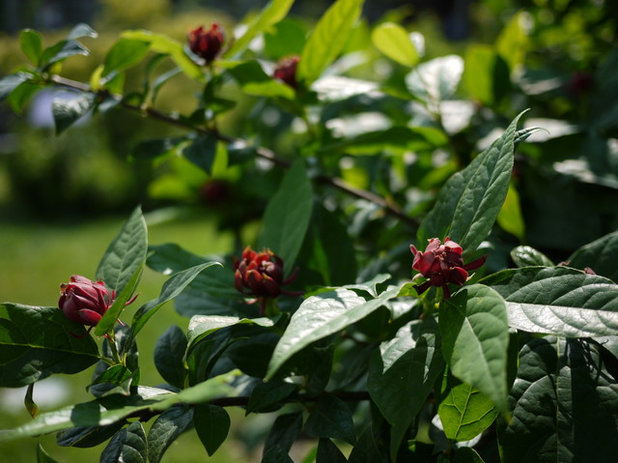 9. Eastern Sweetshrub
9. Eastern Sweetshrub(
Calycanthus floridus)
This Southeastern native is a woodland shrub known for the fruity fragrance of its wine-red blossoms and the spicy aroma of its foliage. It is alternatively known as Carolina allspice and strawberry bush because of its various aromatic qualities. There is actually great diversity in the fragrance of individual plants — some even have no fragrance or an objectionable odor. For this reason it’s always best to purchase plants when they are in bloom so you can be sure of the scent.
Where it will grow: Hardy to minus 30 degrees Fahrenheit, or minus 34 degrees Celsius (zones 4 to 9)
Light requirement: Partial shade or dappled sun
Water requirement: Moderate
Mature size: 6 to 10 feet tall
See how to grow Eastern sweetshrub
Photo by Madeleine Ball





